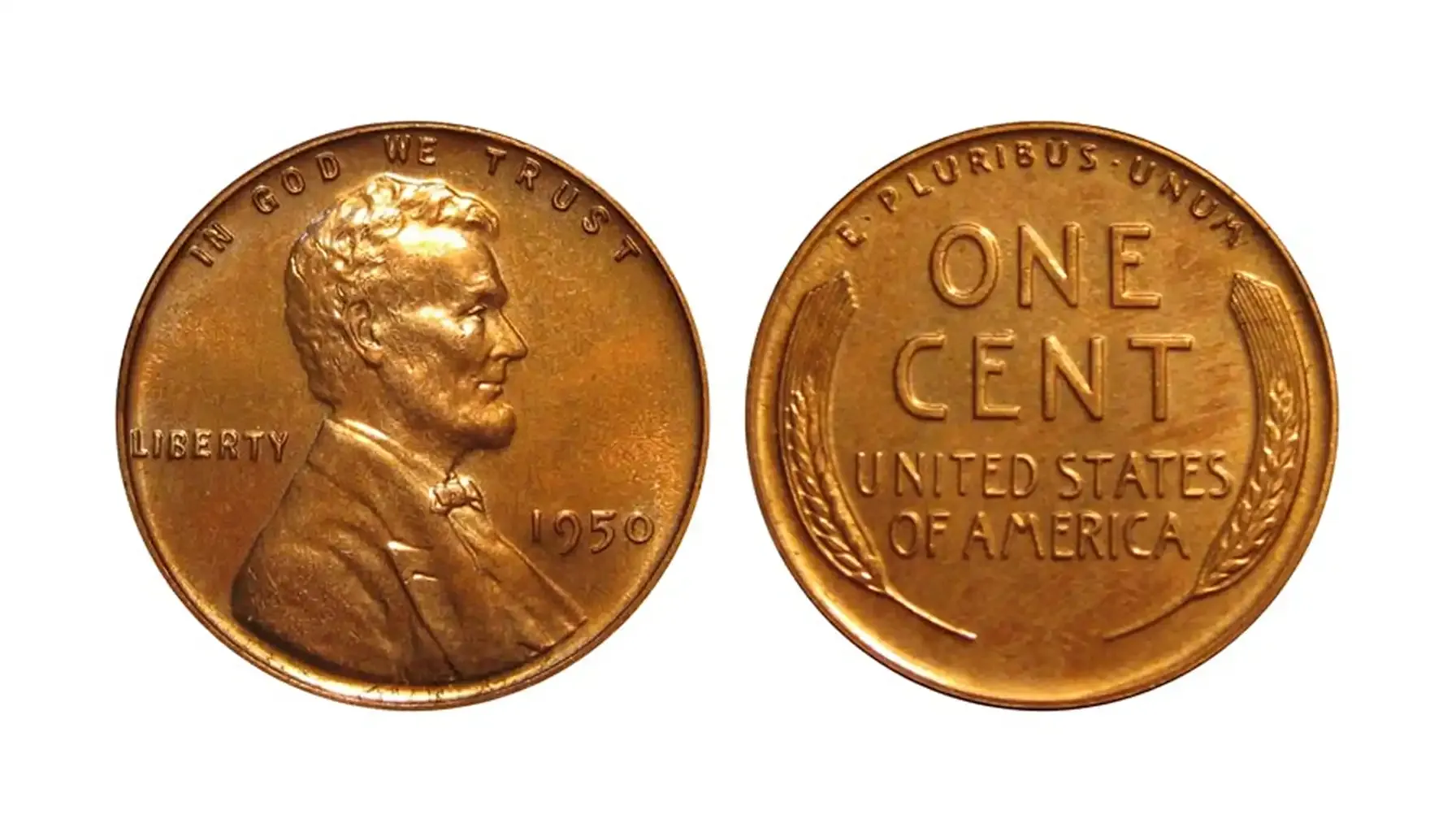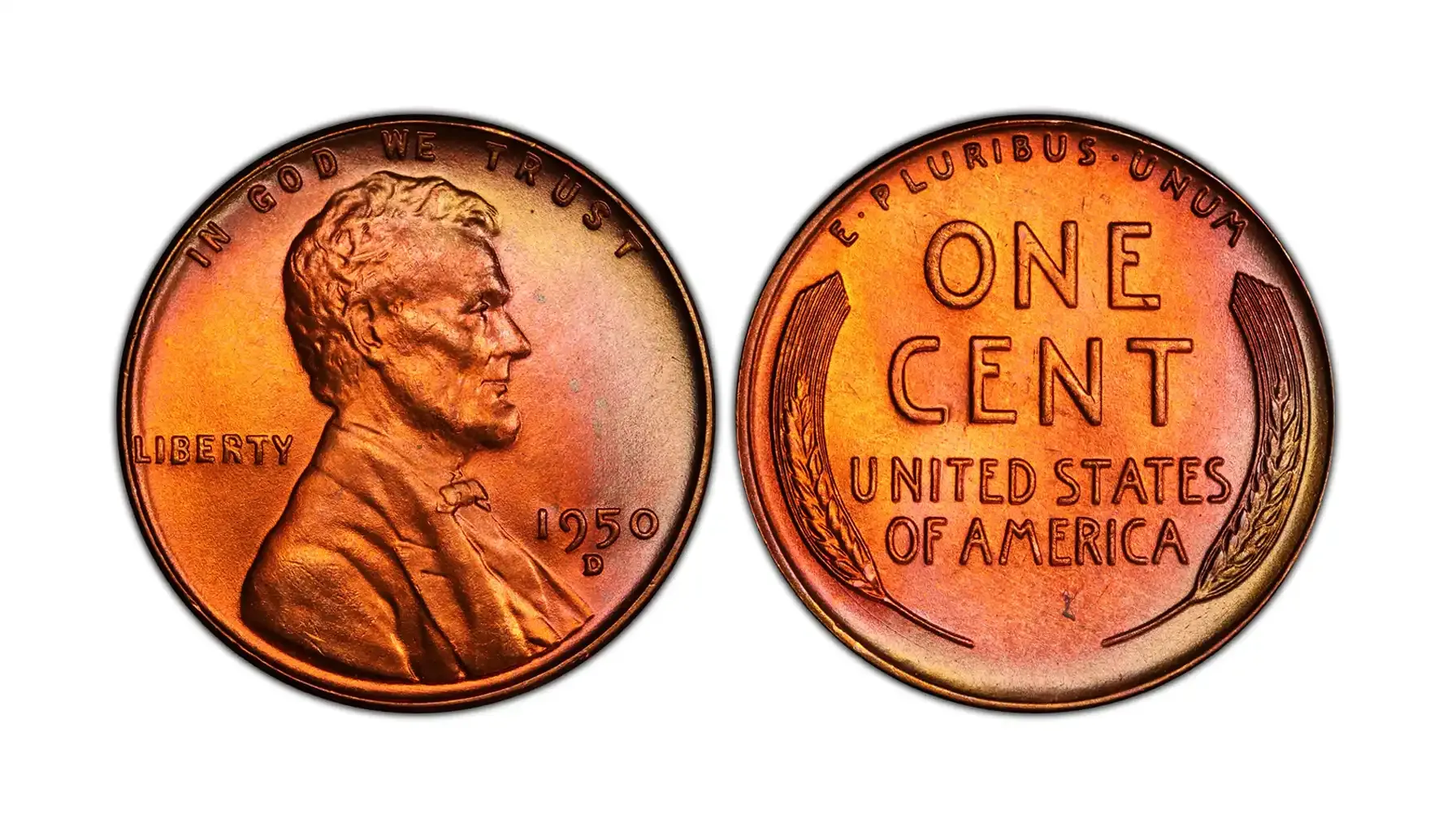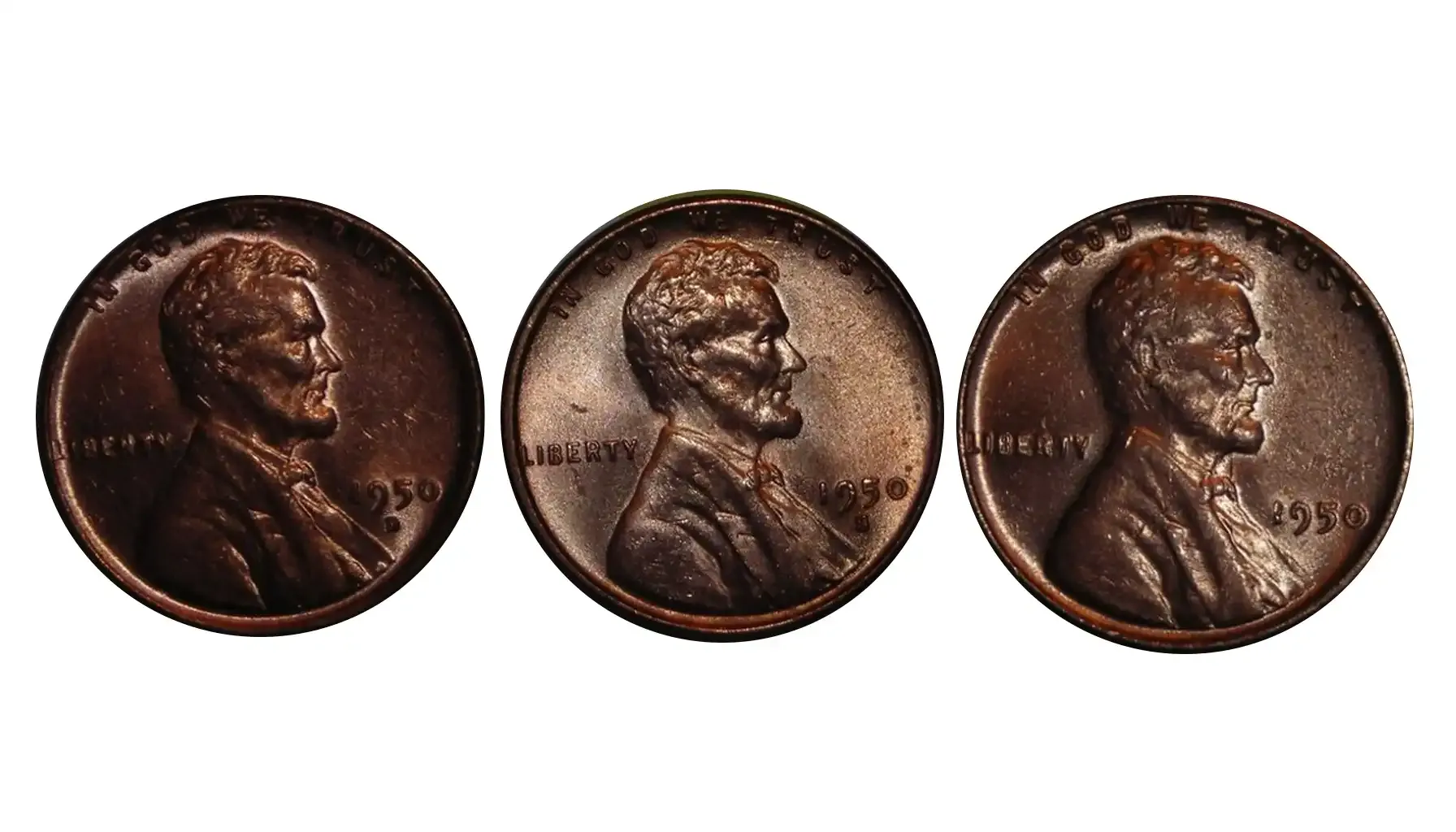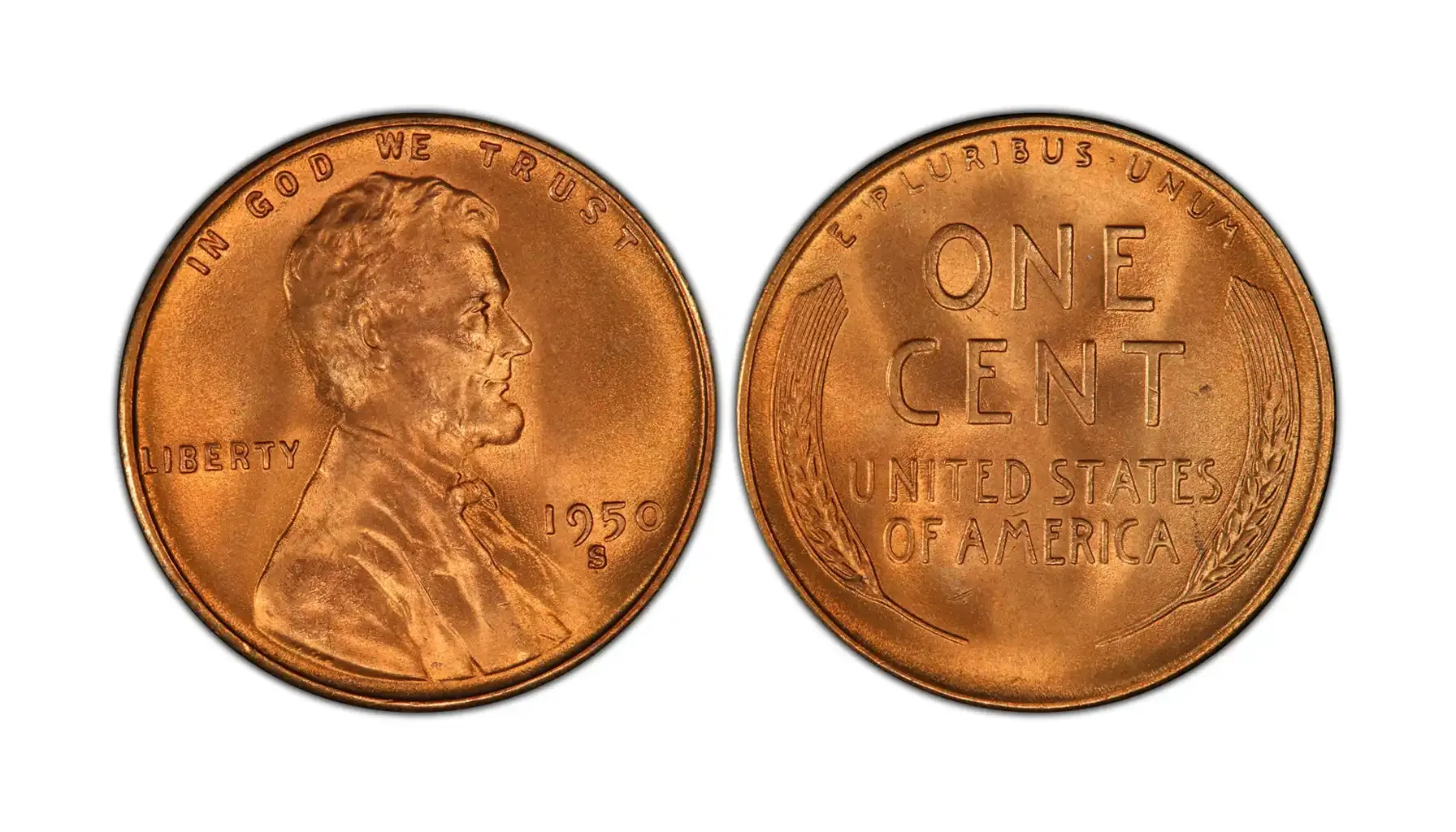Contents:
When it comes to classic American coinage, few coins resonate with collectors quite like the 1950 lincoln wheat penny—and this year’s issue stands out in subtle but significant ways. Though many of 1950 one cent penny samples are still circulating in old jars or handed down through generations, some examples, particularly those with a pristine red luster, are commanding attention (and big money) in today’s market. But why does a coin that’s technically worth one cent fetch $200, $500, or even over $10,000 at auction?
Let’s begin identifying coins and their values by understanding what makes the 1950 pennies worth money, and why a specific subset known as “Full Red” (RD) coins are driving collector demand.

What Is a 1950 Wheat Penny?
The 1950 penny D is part of the long-running Lincoln cent series, which began in 1909 and continued the wheat reverse design until 1958. These cents feature President Abraham Lincoln on the obverse and two wheat stalks curving inward on the reverse—an iconic design that defines early-to-mid 20th-century American coinage.
Made primarily of 95% copper and 5% tin and zinc, the 1950 penny no mint mark, D and S mark was struck in three major U.S. mints:
Mint | Mint Mark | Mintage |
Philadelphia | None | 272,635,000 |
Denver | D | 334,950,000 |
San Francisco | S | 118,505,000 |
Is a 1950 penny rare, you may ask. With a combined mintage exceeding 725 million, this year’s production was abundant. As a result, most circulated 1950 cents still found today are worth face value or just slightly more. However, those that have survived in mint condition—especially with their original red luster intact—enter a different 1950 D wheat penny value tier entirely.
Find out the history of these epochal coins: 1958 Wheat Penny Value – 1958 D Penny Worth Money & Rare Error
Understanding Color: RD, RB, and BN Explained
One of the most overlooked yet critical elements in estimating 1950 wheat penny value D is color designation, particularly for copper coins. Over time, copper naturally oxidizes and darkens, changing from bright orange-red to chocolate brown. That transformation affects both appearance and 1950 D penny value.
Professional grading services like PCGS and NGC categorize copper coins into three color classes:
Red (RD): Цhat makes a 1950 d penny rare, is at least 95% of the original red mint color remaining. These are the most desirable and valuable, especially in high grades.
Red-Brown (RB): A mix of original red and brown toning, typically 5% to 95% red. Mid-value coins in this category still have collector interest.
Brown (BN): Less than 5% original red luster remains. These are the most common and least valuable versions.

The stark difference in 1950 s wheat penny worth between a Brown MS-65 and a Red MS-65 can be surprising—often 5x to 10x the price. And as the grade climbs, that gap widens even further.
The Importance of Luster and Preservation in Estimating Value of 1950 Wheat Penny
The 1950 wheat penny value no mint mark isn’t just about age—it’s about condition and visual impact. A Full Red 1950 wheat penny D is essentially a time capsule: it looks almost exactly like it did the day it was minted, preserving that fiery copper glow collectors crave.
To qualify as “Red,” a coin must:
Show no wear from circulation
Retain strong, uninterrupted copper luster
Have no significant toning or spotting
Even coins stored for decades can lose their red brilliance if they weren’t preserved under ideal conditions. That’s why Full Red specimens are rare and often graded MS-65 to MS-68, making them one of the most valuable 1950's pennies.
Why Full Red Coins Command Premium Prices
So, why does a 1950 no mint mark penny now sell for $200 or more? Several factors contribute to how much is a 1950 D wheat penny worth:
Survival Rate in Top Grade: Out of the hundreds of millions minted, only a small fraction survived uncirculated, and even fewer maintained Full Red color.
Collector Demand: High-grade RD Wheat Pennies are key targets for Lincoln cent enthusiasts assembling registry sets or visually striking displays.
Aesthetic Appeal: Coins with strong red luster and sharp details are simply more attractive—and that means they’re more marketable.
Population Reports: Certified coin population data from PCGS and NGC reveal that RD examples in MS-67 or higher are extremely scarce for the 1950 issues.
It’s the combination of grade + luster + low population that elevates the value. And as we’ll explore in the next sections, those combinations can turn a 1-cent coin into a four-figure collector’s item.
How Much Is a 1950 Wheat Penny Worth by Grade
Color and condition are everything in numismatics. The 1950 no mint wheat penny value surges dramatically as it moves from average circulated to high-end uncirculated condition—especially if it retains its original red copper tone.
Here’s a breakdown of current market estimates for 1950 Wheat Pennies with RD designation:
Grade | Typical Value (USD) | Collector Demand |
MS-65 RD | $30–$120 | Moderate demand |
MS-66 RD | $120–$350+ | Strong demand |
MS-67 RD | $350–$1,200+ | High demand, limited supply |
MS-68 RD | $10,000+ (rare) | Extremely rare |
Values can fluctuate based on eye appeal, population reports, and market timing, but in general, any RD coin graded MS-66 or better is a standout piece in the Lincoln cent series.
Check out this article: Lincoln Wheat Penny Value: Rare Coins Worth Millions
Mint-by-Mint Breakdown: Is a 1950 Penny Worth Anything?
Let’s look at how each mint's production affects how much is a penny from 1950 worth, especially when condition and color are factored in:

Philadelphia (No Mint Mark)
Mintage: 272,635,000
Typical Condition: Often well-struck with decent luster
Typical 1950 Penny Value No Mint Mark: MS-65 RD coins can sell for $50–$120; MS-67 RD or higher jumps to $1,000+
Auction Peak: $10,575 for MS-67+ RD
Philadelphia coins are usually the most accessible, and the 1950 wheat penny no mint mark value is low in circulated grades but can skyrocket in pristine condition.
Denver (D Mint Mark)
Mintage: 334,950,000 (highest of the three)
Typical Condition: Common in circulated state; sharp strikes are frequent
Value Insights: MS-65 RD ranges $40–$130; top-end MS-67+ RD can exceed $1,200
Auction Peak: $15,275 for MS-67+ RD
Despite high mintage, high-end Denver coins are surprisingly rare in Full Red. Strong market interest surrounds top-quality D-mint examples and affects how much is a 1950 D penny worth.
San Francisco (S Mint Mark)
Mintage: 118,505,000
Typical Condition: Tends to be the lowest surviving population in RD condition
Typical 1950 S Penny Value: MS-65 RD sells for $70–$160; MS-67 RD fetches $500–$1,200
Auction Peak: $10,800 for MS-68 RD
S-mint coins are the sleepers—less common overall, but highly respected by serious collectors for their scarcity in elite condition.
How to Tell If You Have a Full Red 1950 Wheat Penny
The difference between a coin worth a few cents and one worth hundreds—or even thousands—can come down to color and surface quality. Here's how to estimate what is a 1950 wheat penny worth at home before turning to professional services:
1. Check the Color Under Bright Light
A Full Red (RD) coin should have bright, fiery orange-red copper luster.
The color should cover at least 95% of the coin’s surface with very minimal darkening.
Hold the coin under natural daylight or a white LED lamp to inspect its hue.
If the coin looks mostly brown or has dark spots, it's likely a Red-Brown (RB) or Brown (BN)—less valuable but still collectible in high grades.
2. Assess the Overall Condition
No signs of wear on Lincoln’s cheek, hair, jawline, or the reverse wheat stalks.
Strong details, especially in fine features like Lincoln’s bowtie and the texture of the wheat heads.
Original mint luster visible across the coin’s surface.
Look for a coin that appears “fresh”—not dull, scratched, or faded.
If your penny has wear, it's circulated and unlikely to achieve RD designation. However, coins that look untouched could be valuable candidates for grading.
Why Grading Matters (and How to Do It Right)
Grading is the most reliable way to unlock the full potential of what is a 1950 penny worth. Reputable third-party grading companies like PCGS and NGC will authenticate, assign a grade, and specify color designation.
Benefits of Getting Your Coin Graded:
Confirms authenticity and quality
Increases buyer confidence if you choose to sell
Provides certification and encapsulation (slab) to protect the coin
Makes your coin eligible for auction with top dealers
When Should You Submit a Coin for Grading?
Consider submitting if:
Your coin has Full Red color with no visible wear
It appears to be MS-65 or better
You’ve compared it to online reference photos or population reports
You expect it to have valuable 1950 D wheat penny error
For valuable submissions, join PCGS or NGC or use an authorized dealer to send your coin in securely. Be aware of submission fees, but remember—grading a high-end RD coin can multiply resale 1950 S wheat penny value dramatically.
Check out this article for more grading insights: 1953 Wheat Penny Value – D, S, No Mint Mark & Rare Errors
Additional Value Boosters: 1950 S Wheat Penny Error Varieties
While this year’s production is not particularly famous for dramatic 1950 wheat penny error, there are still a few to watch for:
Repunched Mint Marks (RPMs): Most commonly seen on Denver and San Francisco coins. A D or S that appears doubled can raise collector interest.
Die Cracks or Cuds: Unintentional raised lines or blobs caused by worn dies can attract premiums.
Off-Center Strikes: Rare but possible—coins not properly aligned with the die often have a visible blank crescent.

If you suspect you’ve found a unique error, it’s worth consulting a coin expert or getting a second opinion before listing or grading.
The 1950 Wheat Penny is a perfect example of how numismatics turns the ordinary into the extraordinary. A coin that’s technically worth one cent can leap in value when it meets the golden trifecta: Full Red color, high Mint State grade, and strong eye appeal.
And if you're unsure about what you’ve found, consider using the best free coin identifier app to get a quick digital assessment, identify mint marks, and compare market prices from how much is a 1950 penny worth in 2022 to nowadays.
